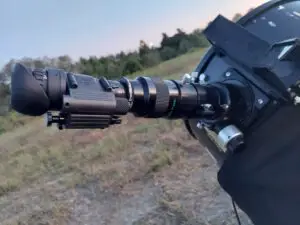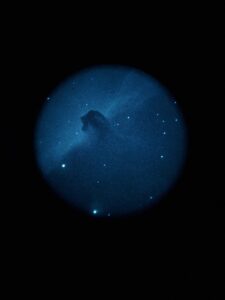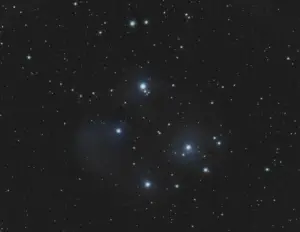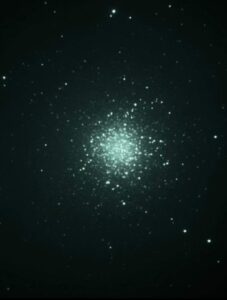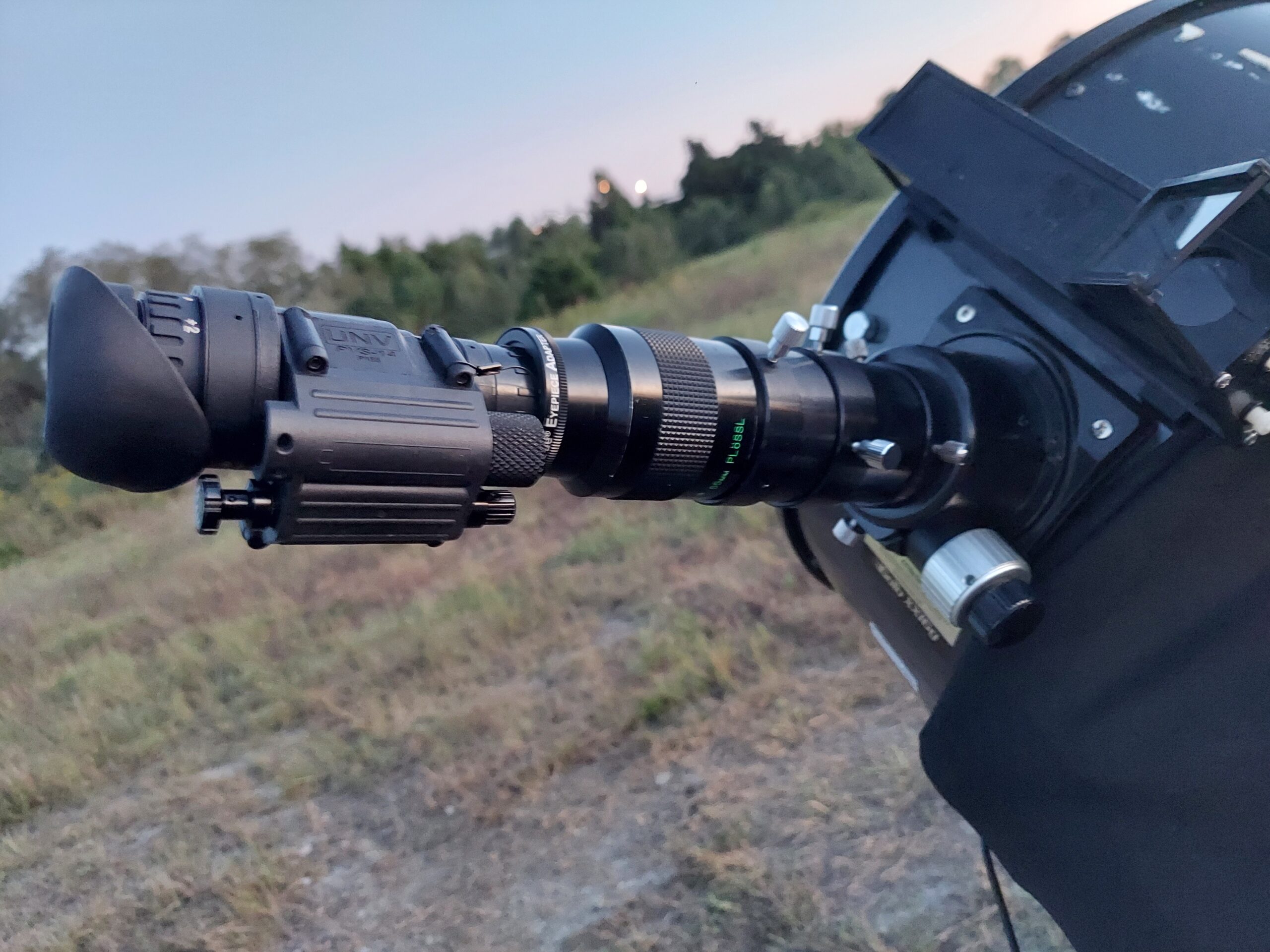Eye relief is the distance between your eye and image in your eyepiece. Often eye relief problems can be mitigated with an eyecup. Those who wear glasses when they observe may want adjustable eye cup eyepieces.
In general, longer eye relief makes an eyepiece easier and more comfortable to use, but there are some exceptions.
It is also important to remember that every astronomer is different and your personal preference for eye relief may be very different.
Those who wear glasses when you observe, longer eye relief gives you more adjustability to achieve focus.
Eye relief refers to the distance your eye sits from the exit pupil in your eyepiece, but the distance of your eye to the first piece of optical glass is the eye cup height and that is adjustable.
Consider choosing eyepieces with adjustable or twist up eyecups, but the eyepiece should be rigid enough to stop your eye from getting too close to the optical glass.
Roughly 12mm to 20mm is generally good
Longer focal length tends to have longer eye relief
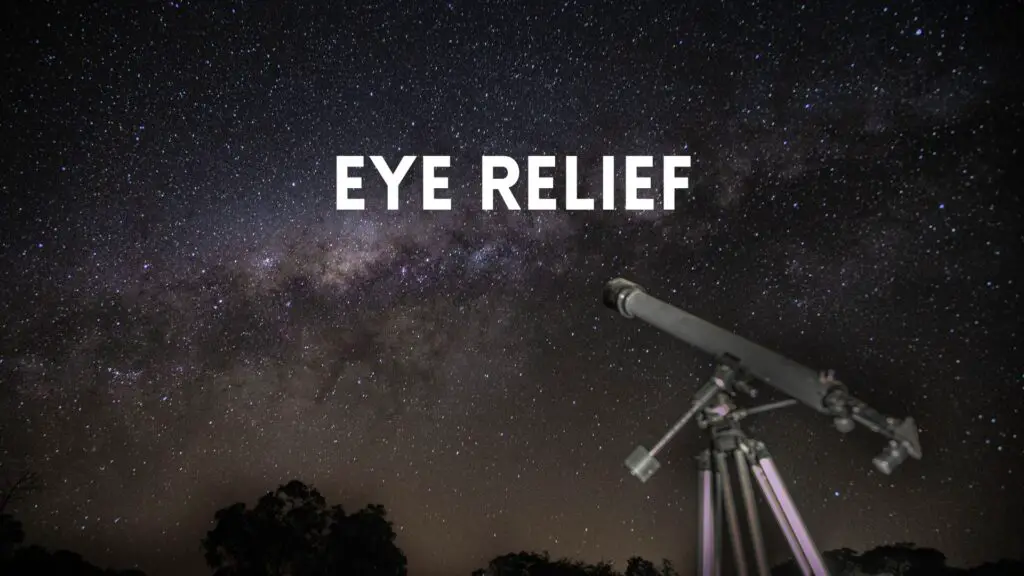
What does eye relief mean?
Eye relief is the distance from your pupil to the exit pupil of the eyepiece. Eye relief affects focus and comfort while viewing.
Your eye must be a certain distance from the exit pupil. The exit pupil is the point where the light converges and an image is formed in your eyepiece and it is not adjustable.
The eye relief between your eye and the optical glass is adjustable, so if you are struggling to achieve focus it may be an issue with the distance from your eye to the focal point.
How can I find an eyepiece’s eye relief?
Eye relief is generally a listed specification on eyepieces.
Manufacturers measure eye relief as the distance from the last piece of optical glass to the exit pupil, which sometimes makes for some large eye relief numbers.
It may be best to use these numbers as a comparison as every manufacturer measures it the same way.
You can find the specs of eyepieces on Orion’s website by choosing the specs tab. Here are the specs for a 19mm Orion Widefield eyepiece:
You can also find the specs on Amazon, but I find that it is easiest to use Crtl+f and search for eye relief on the page.
This is a very similar eyepiece as listed on Amazon.
You can see that the information is hidden deep in this paragraph.
Eye relief listed on the stats pages can be a helpful indicator of the eye relief of an eyepiece, but it may not share much about the eyecup.
Whenever possible go with an adjustable or twist up eye cup.
Short vs Long Eye Relief
I consider a longer eye relief to be 15 to 20mm and anything less to be a short eye relief. Remember that these numbers are the distance from the top of the optical glass to the exit pupil where the image forms.
It is important to know that there is such a thing as too much eye relief. If an eyepiece has too much eye relief you will experience blackouts or decreased field of view. You may also see other image distortions like kidney bean-ing or out of focus images.
If you find that you cannot see through an eyepiece it could be a problem with eye placement.
One well-known example of too much eye relief is the Baader 9 Morpheus. It has almost 20mm of eye relief, but the eyecup is very flimsy. The first night I used this eyepiece I experienced lots of blackouts and kidney beaning. The second night, I figured out how to achieve the correct eye placement and it is usable, but not super comfortable.
Now, my friend Mike had the same experience with the Baader 9 Morpheus.
Brian on the other hand, sold it. He could not get comfortable eye placement and the eyepiece was useless to him.
You may find that there are some eyepieces that just don’t work for you and your eyes. You may not know this by reading the specifications online, so whenever possible buy used and resell if necessary.
I have found that eye relief has a lot to do with personal preference and sometimes you just have to give it a try to see if you like it.
What is considered good eye relief?
As a general rule, 15mm is a good, long eye relief. While there are differences in personal preference, very short eye relief is generally uncomfortable for long viewing sessions.
If you have very short eye relief you may also find that your eyelashes swipe across the glass when you blink.
This is uncomfortable and it can get oil and dust onto the optical glass requiring frequent cleaning.
Plossl eyepieces generally have the shortest eye relief and can be very uncomfortable for long viewing sessions.
I recommend adjustable eyecups when possible. You can replace eyecups on many eyepieces if you find the eyecup uncomfortable on an eyepiece. The eyecups may be difficult to find on their own, but you can sometimes switch eyecups between eyepieces in your collection.
Tele Vue offers an eyeguard extender that increases eye relief for your Tele Vue eyepieces. There are many reasons why astronomers like to keep a collection of Tele Vue only eyepieces and this is another reason.
Does Eye Relief Increase with Magnification?
Usually eye relief decreases with magnification. You can see in the table above that there are plenty of exceptions, but I will leave a table here to give you an idea.
This is the beginner eyepiece line from Orion, these eyepieces are all under $50, so they are not luxury eyepieces, but I thought it illustrated the point well.
| Eyepiece | Eye Relief |
| 10mm Orion Sirius Plossl | 6.5 mm |
| 12.5mm Orion Sirius Plossl | 8.1 mm |
| 17mm Orion Sirius Plossl | 11 mm |
| 20mm Orion Sirius Plossl | 13 mm |
| 25mm Orion Sirius Plossl | 16.9 mm |
| 32 Orion Sirius Plossl | 20 mm |
Very high power eyepieces (lower number) will usually have less eye relief.
A 9mm plossl which generally comes with your telescope often has 3 mm of eye relief.
This is one reason it is worth upgrading to have more comfortable viewing.
We have a good list of recommended eyepieces in this guide to how many eyepieces you should have and how to store your eyepieces.
Glasses and Eye Relief
If you must or choose to wear glasses when observing your eye will be further away from the optical glass then without glasses.
The amount of eye relief that works best for you will be a matter of preference and comfort. The best way to choose eyepieces is to try a bunch and experiment.
We recommend that you only keep a small collection of eyepieces that you use frequently, but you can experiment by attending a star party, going to an astronomy store or reaching out to the astronomy community to try a few eyepieces and get a feel for brands and eye cups that are comfortable for you.
You may also choose to buy used eyepieces. They hold their value well and they are easy to ship if you decide to resell it.
Eye Relief and Astigmatism
If you have been diagnosed with astigmatism there are special accessories that you can use to correct it at the eyepiece.
Dioptrx by Tele Vue is an astigmatism correcting lens that attaches over the eyepiece and corrects astigmatism.
Dioptrx comes in a range to match the astigmatism that you have been diagnosed with, so get a fresh exam before selecting your lens.
What eyepieces have good eye relief?
Twist up or sliding eyecups are the best option in my experience. Many eyepieces can use different eyecups and they can be purchased separately.
Focal length can impact the level of comfort you experience using a telescope. While many eyepieces can be switched from telescope to telescope focal length does impact performance.
Adjustable eye cups give you some flexibility to help you observe comfotably.
Explore Scientific eyepieces all have good eye relief in my experience.
| Eyepiece | Eye Relief | Cost |
| Explore Scientific 14 mm | 14.5 mm | $$$ |
| Explore Scientific 5.5 mm | 12.9 mm | $ |
| Explore Scientific 16 mm | 11.9 mm | $$ |
| Explore Scientific 28 mm | 21.6 mm | $$ |
| Explore Scientific 20 mm | 14.5 mm | $$$ |
| *Tele Vue Delos 12 mm | 20 mm | $$ |
| * Tele Vue Delos 14 mm | 20 mm | $$ |
| Astrotech 13 mm | 15 mm | |
| Orion Edge On Planetary 9 mm | 20 mm | $ |
*Twist up or fold up eyecup
Again the shorter the focal length,the shorter the eye relief. However even with the Orion Edge-On Planetary line,the 6mm has 20mm of eye relief.
Tele Vue Delos are great, featuring a twist up and fold up combination.
As mentioned before,if you can get used to the eye placement,the Morpheus line from Baader is known for giving great views, but personal preference comes into play a lot with this eyepiece.

